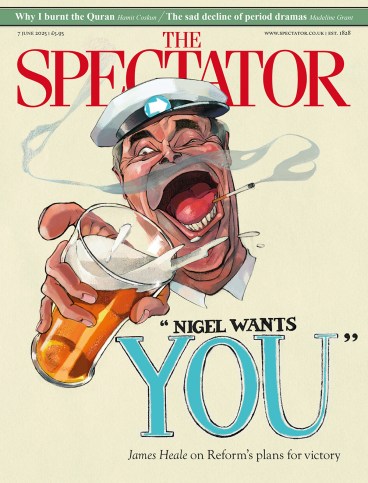
Every few years the shade of Edward Burra is treated to a Major Retrospective. The pattern is long established: Edward who? Forgotten genius, sui generis, well known for being unknown save by beardy centenarians and art tarts with ginny voices. Why have I never heard of this man? LGBT-ish avant la lettre, Polari-ish. After the show inhumation beckons again and he will disappear into an obscurity that cannot be relieved until the curatocracy once more lets loose the dogs of hype. George Melly and Dan Farson are no longer around to peal his name and Jane Stevenson’s impeccable and often funny biography suffers from its subject’s being a forgotten genius, sui generis, unknown save… etc.
In later years Burra was the very picture of a different neglect: physical. He gave a fine impression of being an embittered down-and-out: a seamy, slight invalid, reedy-voiced, equipped with a tramp flask, 40 Gauloises and a lag’s hairdo. A perfect role for David Bradley. Although he was no Joë Bousquet – ‘Ma blessure existait avant moi: je suis né pour l’incarner’ (‘My wound existed before me: I was born to embody it’) – he was nonetheless a super-valetudinarian. He suffered an enlarged spleen, jaundice, anaemia, rheumatic fever, chilblains, crippling arthritis, more or less permanent pain, depression. His background was provincial upper-middle-class. His animosity towards Rye’s tweeness fuelled him – and he knew it, he spent most of his life there. He was supported by his devoted family of local grandees. These circumstances might have been conferred on him so that he could devote his surprisingly long life to his art.
He was no joiner, he loitered uncommitted, fag between his lips, on the fringes of the British Surrealist Group. Strength in numbers held no appeal, despite the supposed professional advantages of belonging and promotion, advantages that he disdained along with the formulaic characteristics and props of the group: marine gewgaws, buoys, halyards, bollards; spray-on incongruity, dissonance, indoors-outdoors, impossible objects. There were rules – less silly and pettily strict than those confected for the first Surrealist Manifesto by André Breton, the self-appointed impresario of that movement, whose absurd boasts included having ‘discovered’ Lewis Carroll.
Burra was even less formally attached to the artists included in the first postwar Penguin Modern Painters monographs edited, cautiously, by Kenneth Clark, for whom modernity was a very broad church, perhaps invisible to an eye less acute than his. Some of the subjects were almost Victorians, at least a generation Burra’s senior. More were splodgy post-impressionists whose day will never come and a very few who might just about be reckoned to belong to modernism’s many strands. Burra was a refugee from all schools, which posed a problem for Clark as it has for many kunst-wallahs since. If a taste for abstraction was a sure criterion of modernism Burra was not modern save by calendrical happenstance. Does it matter? No. Where does he fit in? The reply is simple: he doesn’t. Why should he? Taxonomy is readymade, off the shelf. It’s not appropriate for the awkward customer. Burra requires made-to-measure.
His art is the ne plus ultra of mongrelism: a painting derivative of Goya in witch mode will very likely turn out to be a frail pastiche. However, a painting derivative of Goya and, simultaneously, of Beardsley in foetus-mode may cohere like the simple magic of mayonnaise to make something that did not previously exist. Such works are compositionally consistent throughout his oeuvre. They resemble collages and so include in the same picture elements that clash in scale, genre, material, depth, texture, colour; elements that veer from the rush towards a vanishing point to everything existing on the same flat plane. Foreground and background meld into ground tout court. Typically, a picture will include mood changes, rackety laughter, unfathomble misery, bashing into each other like free-range dodgems. Elision is seldom his way. Collision is right up his street. He relished contrapuntal prangs. He unlearnt perspective but in a different way from, say, Picasso; he was no fan of pseudo-primitivism. He practised legerdemain, mocking for instance size constancy: malevolent distended dwarfs with razor beaks and magnificent buttocks tower above pocket goliaths.
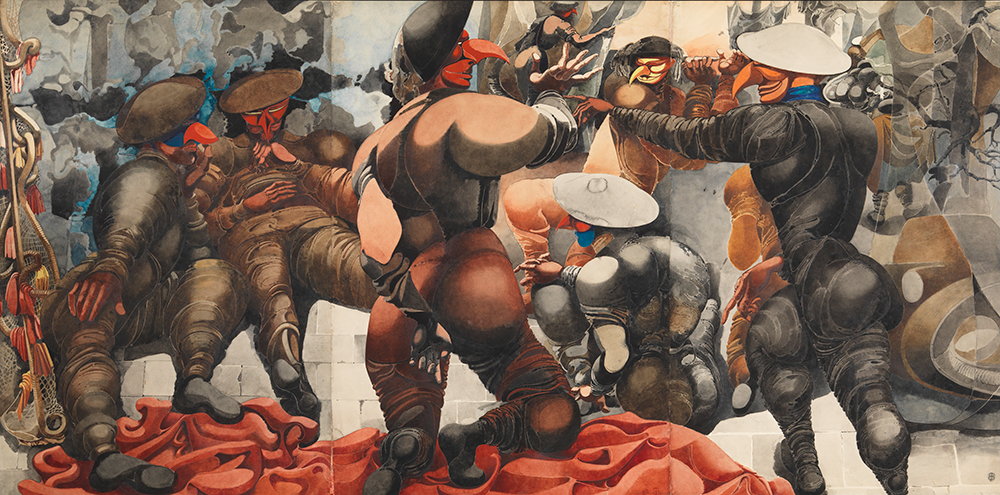
Where does Burra fit in? The reply is simple: he doesn’t
He died a virgin. The only sexual sensation he admitted to was a fleeting low-grade erection provoked by Mae West. So he had a lot to make up for. He carried with him a child’s polymorphous perversity. It’s difficult to believe that he remained unaroused by his creations: erotic if you’re coy, pornographic if you’re candid. His joy in friendship, travel, a personal form of camp and obsessional work was relieved by gloom (as it always is).
His anomie was overcome by making art whose gloriously impure styles, ceaseless mutations, dissonance and hefty blasts are uplifting and ordered even if the many milieux he creates (rather than represents) are soiled with inerasable gouts of squalor and soot. Punishing his liver recklessly, smoking heavily, inventing an idiolect as singular as his art and carving a personal mythology were not merely habits, but of his very marrow.
One foundation of his art was the fantastical, born of a monstrously powerful imagination. ‘Conquistadores in ballet tights’: William Feaver’s neat epithet suggests hybridism. His imagined organisms may be humans in masked carnival disguise, they may be fugitives from dreams, they may be deliberate rejections of the external quotidian, they may all exist at the same level of actuality – there is only one level in his work. The cloaked bird’s claws, the cartoon gangster, the lewdly naked torturer wielding ball and chain, red Satan leering – these métèques are granted the same degree of being: their anthropomorphic and zoomorphic qualities do not give them precedence.
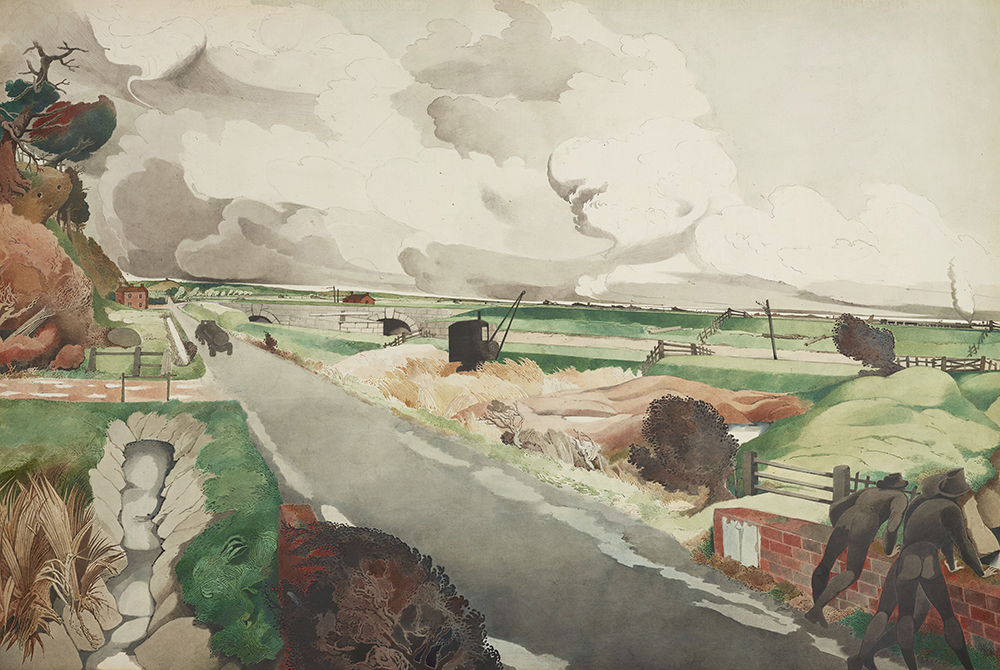
Another foundation was simply looking. He relished passive exposure to virtually everything that came his way: the view through the windscreen of his sister’s car on their frequent tours or from the room where he worked or of clouds over Romney Marsh or erratics on the Burren. He retained what he saw with exceptional acuity: pocked faces in low bars, prostitutes’ costume jewellery, gingivitic matelots hawking their brawn, dry-stone walls, clothes, chandeliers and spoked cart wheels, which abound. These essentially agrarian items are stolen by an essentially urban painter who typically doesn’t invest them with any more meaning than, say, twigs becoming arachnids or agri-polythene billowing beside a midden – they are more worrying than menacing, though their insistent frequency suggests that they owned the key to some thing or person or place of significance otherwise concealed.
A sly menace does, however, infect one strain of his opus. While he remains forgotten – and will soon again attain that status – there are a handful of works that could never attract Raymond Mortimer’s patronising disparagement of him as ‘loud’. Which might be translated as ‘un-English’. In the 1960s and 1970s Burra, who didn’t give a toss about such jibes, turned to landscape with the confidence of a master even though he was re-embarking on a path that he had seldom previously pursued. This was a long way from Harlem and Toulon (see below), from the teratological attractions of Leslie Fiedler’s Freaks and Stephen Bayley’s Ugly, from Benny Hill and Donald McGill gone to the bad.
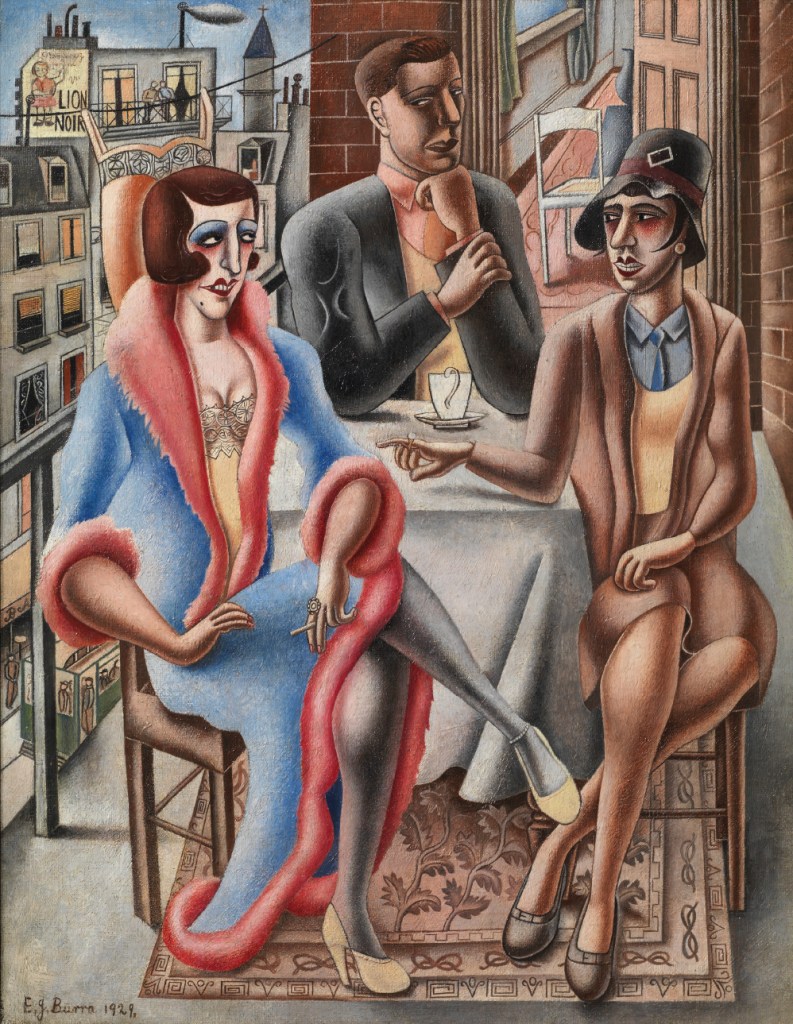
His downlands, mutilated by tunnels and vast glaring lorries, reveal the chalk beneath the skin. The quieter pieces in this idiom become dramatic with scrutiny. They show the malign horror of England’s sodden terrains vagues and reeking landfills. In ‘The Allotments’ (1962-3) a man labours beside a shack made of doors and, no doubt, plentiful asbestos. He is digging what may be a grave in the backlands soil watched by a crow on a stump. It is a marvellous work, Greta Bridge by way of Edgar Allan Poe. ‘The Country Road’ (c.1940) is a beautifully detailed land-and-waterscape, a manmade industrial site of leets and floats, monstrous possibly transgenic vegetables poised to take over, discomfiting estuarine light, distant orchards, a lurking cloud with the face of a spiteful putto. And what are a couple of sinister bucolics up to in the bottom right-hand corner where, Burra told Anthony Powell, he often began a painting. One bucolic has, as they say, failed to adjust his dress. It’s all buttocks, dearie, as our man would have it.
Edward Burra – Ithell Colquhoun is at Tate Britain from 13 June until 19 October.

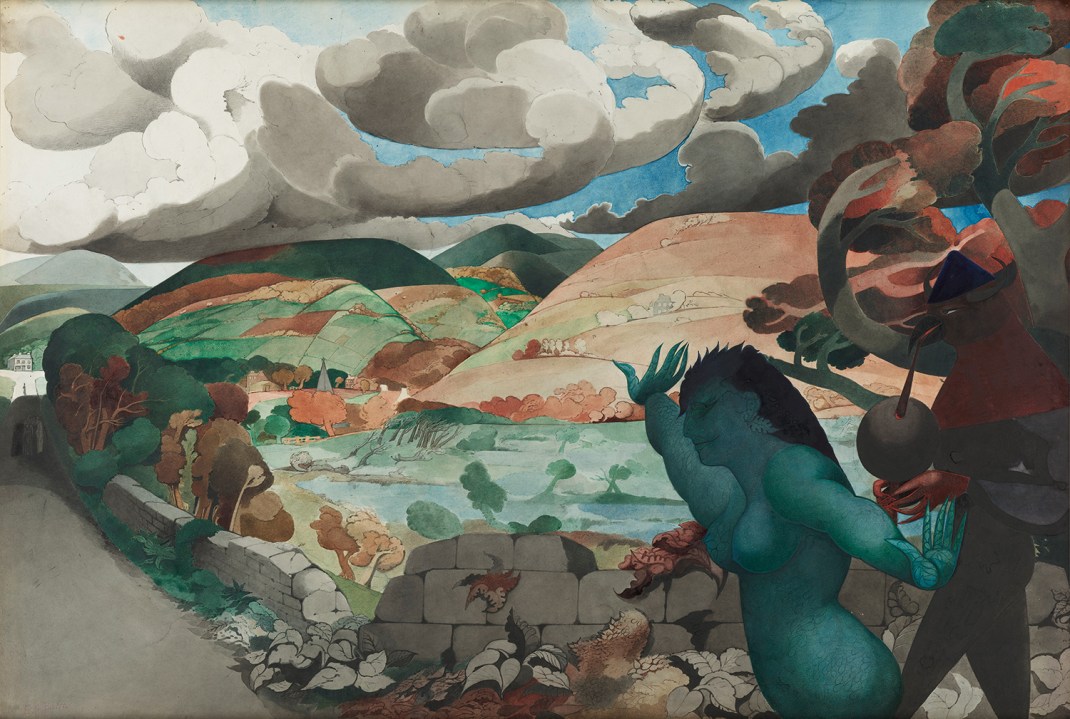
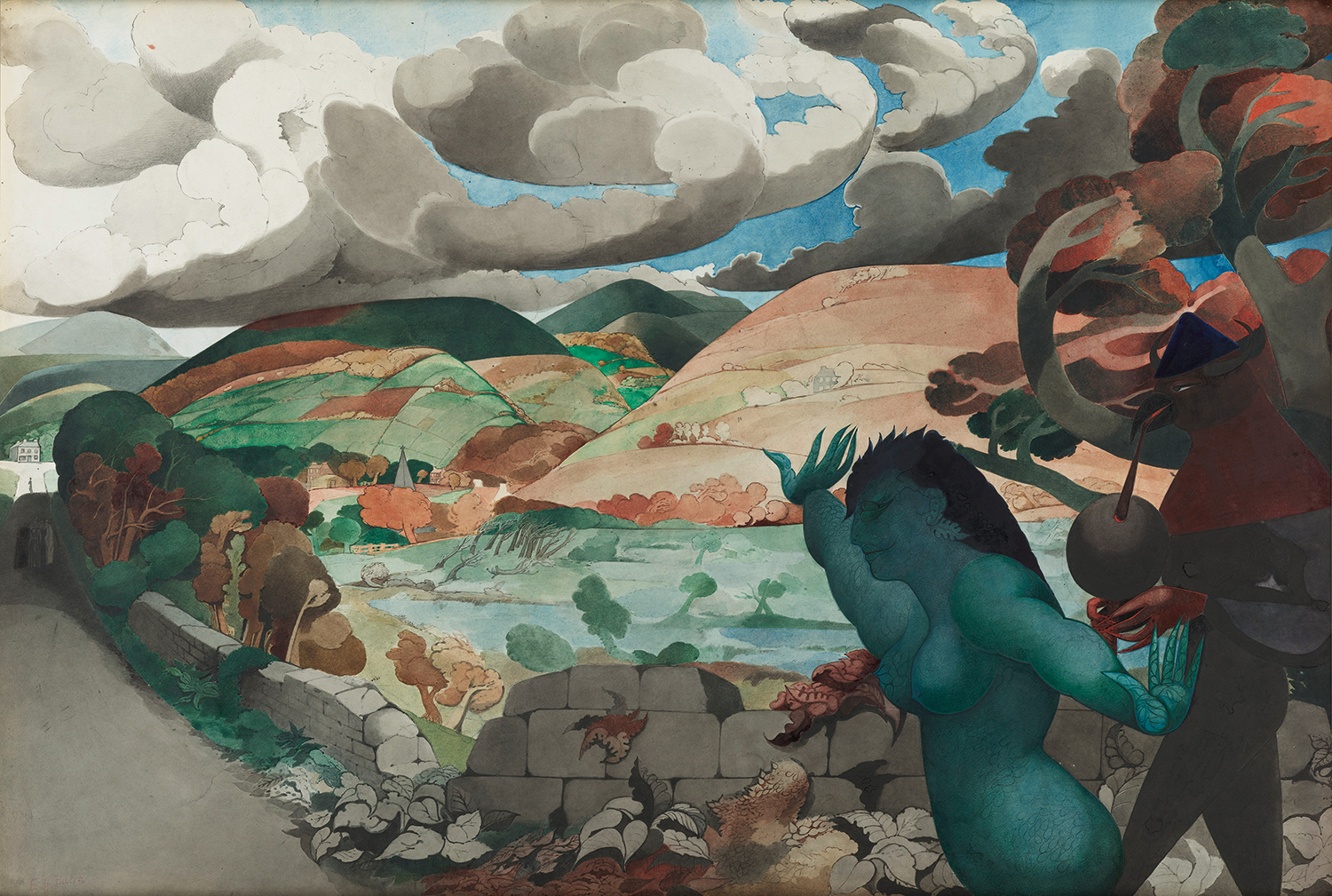




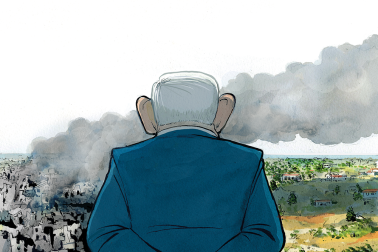
Comments